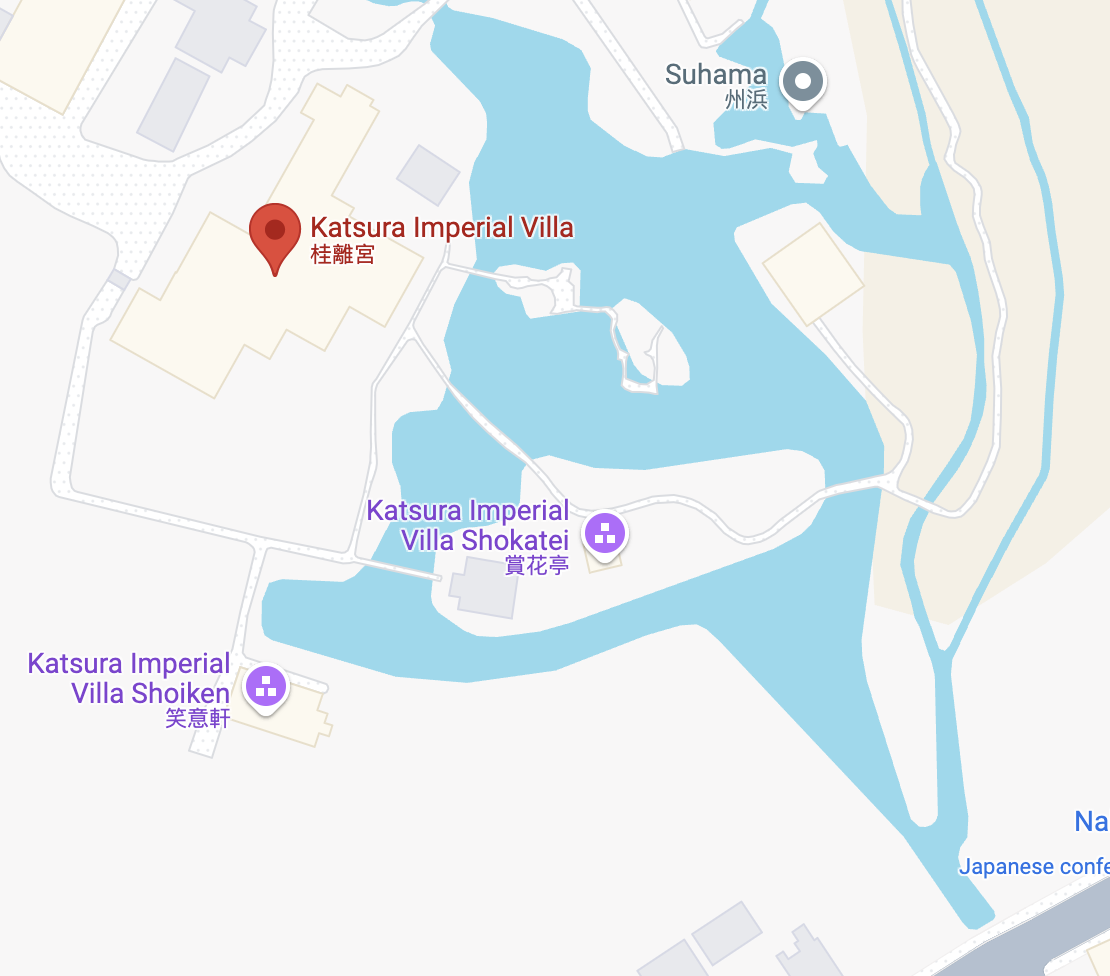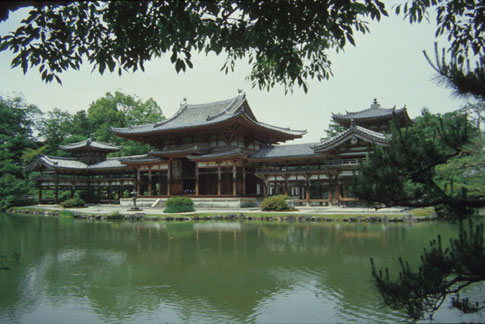
Katsura Imperial Villa was built in the early Edo Period as a residence for Prince Hachijo no Miya Toshihito (1579-1629). The garden to the south of the villa is a stroll garden and also a boating garden, its pond large enough to accommodate modest vessels. The entire complex recalls the world described in the Tale of Genji, and was undoubtedly intended to evoke the golden age of the Heian courts when such a pond garden would have been viewed from the southern pavilions of the typical shinden villa. Choose a view point from the map or click Tour the Garden for more views of this garden.
Katsura Imperial Villa (or Katsura Rikyu: "Detached Palace") was built in the early Edo Period as a residence for Prince Hachijo no Miya Toshihito (1579-1629). The area bordering the Katsura River to the west of Kyoto had been in imperial hands for some time, and there is evidence that Toshihito had built some sort of structure--perhaps nothing more ambitious than a kind of extended tea house--as early as 1616. A more ambitious structure was erected in the early 1620's, was repaired and renovated in the 1630's under the direction of Toshihito's son Noritada, and was expanded later in that century. The villa as it stands today is famous for its spare, almost minimalist design, a classic example of sukiya style architecture. The garden to the south of the villa is a stroll garden of extraordinary complexity, full of twists and turns and surprising vistas. It is also a boating garden, its pond large enough to accommodate modest vessels. The pond has been altered somewhat over the years, losing one of its islands and a long bridge, but is essentially the landscape that Toshihito would have enjoyed from the veranda of the villa. The entire complex recalls the world described in the Tale of Genji, and was undoubtedly intended to evoke the golden age of the Heian courts. However, it differs from the shinden palaces of the Heian in its more compact plan, and in the fact that it faces southeast rather than due south. This latter deviation from the principles of feng shui was apparently intended to provide the residents with a better view of the rising moon, a phenomenon of great significance in garden design.
The garden is famous for its specific references to real and mythical landscapes, the former category represented by a miniature version of the Amanohashidate--one of Japan's most popular scenic wonders--and the latter category by the islands of the lake, three of which were undoubtedly intended to represent the mythical Isles of the Blest.

